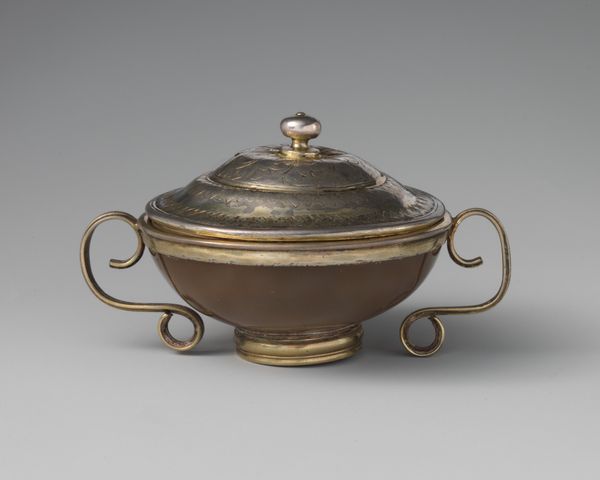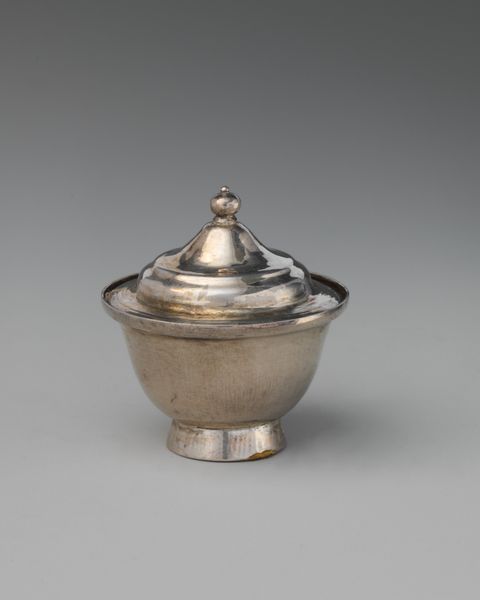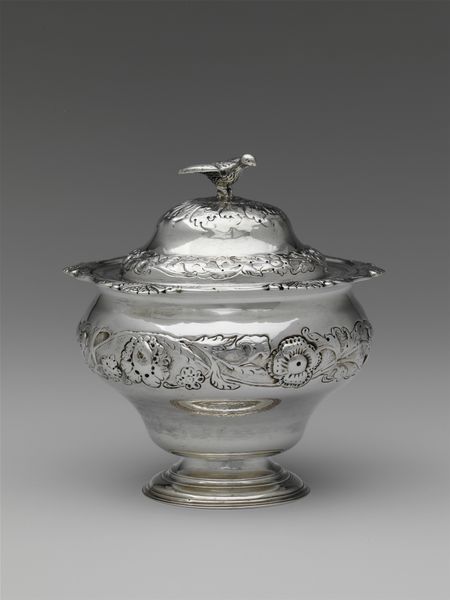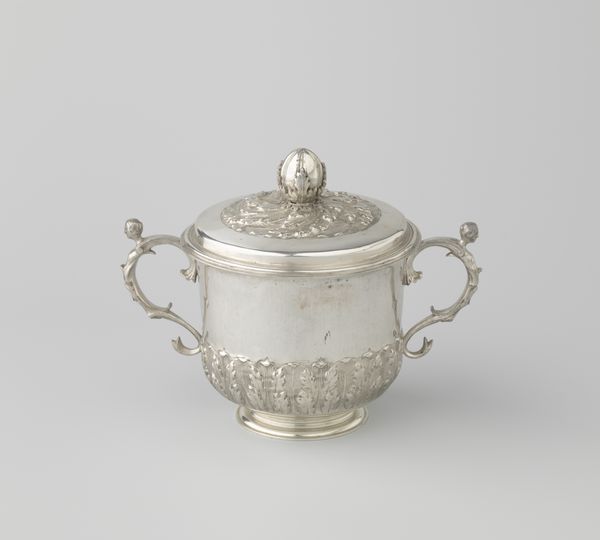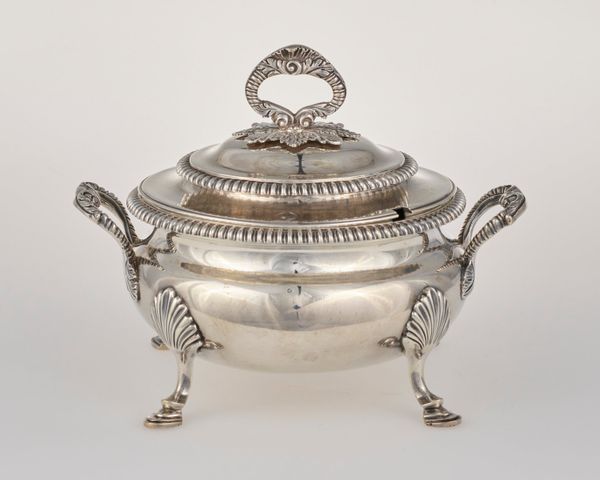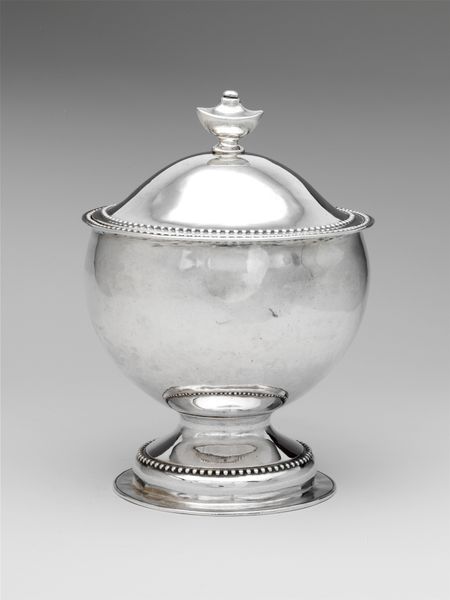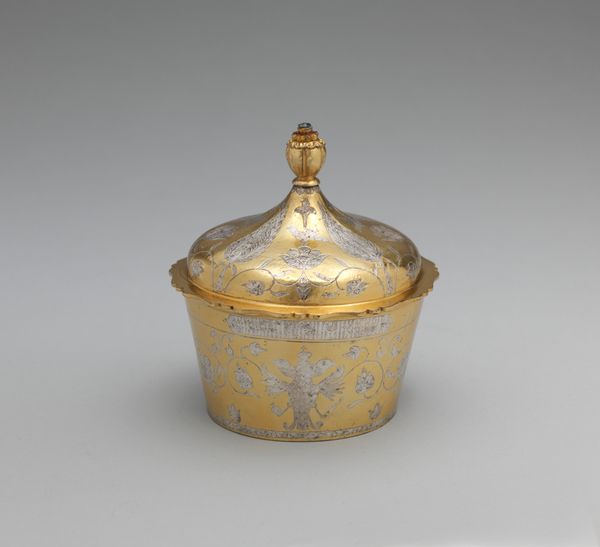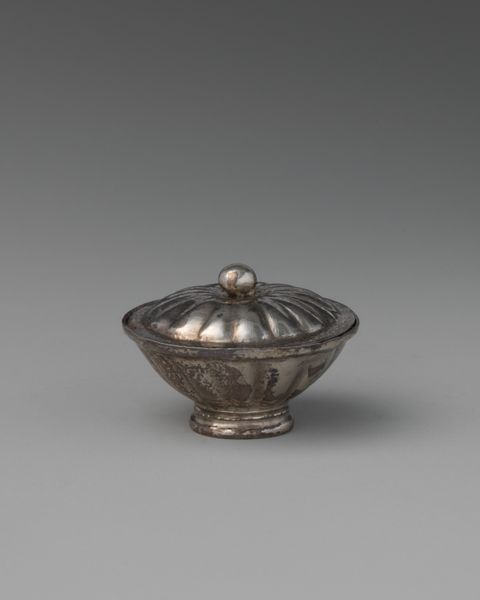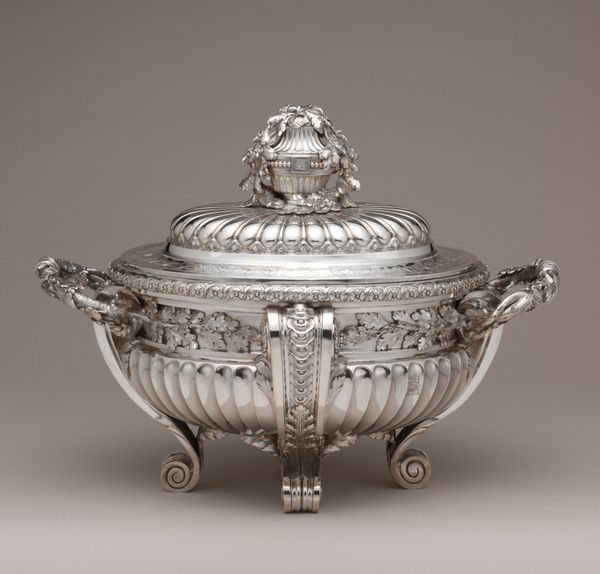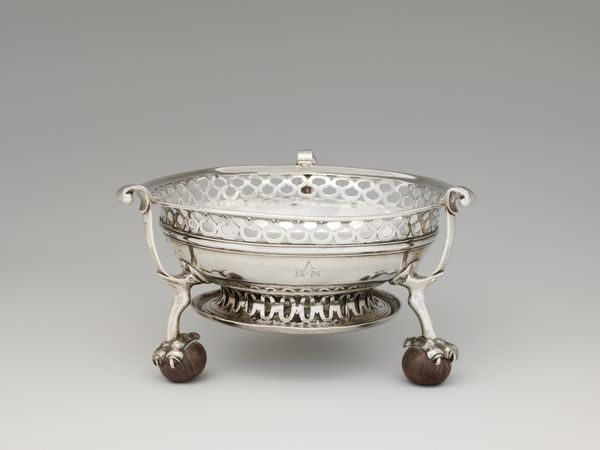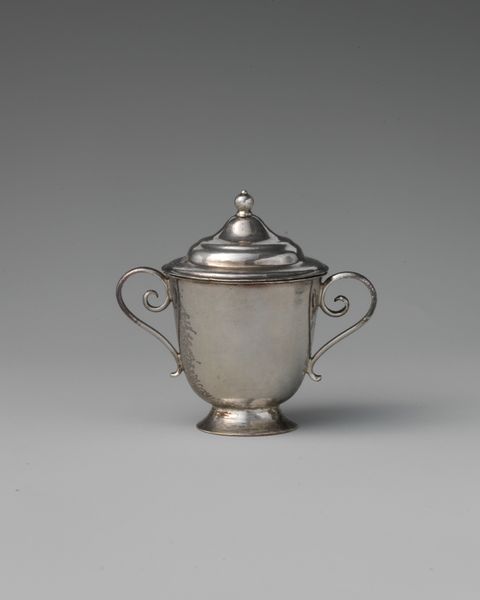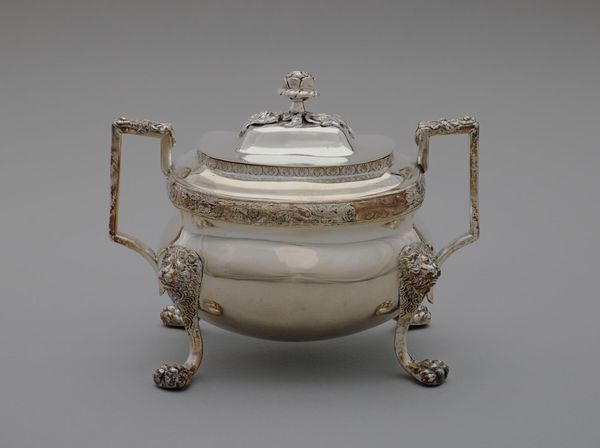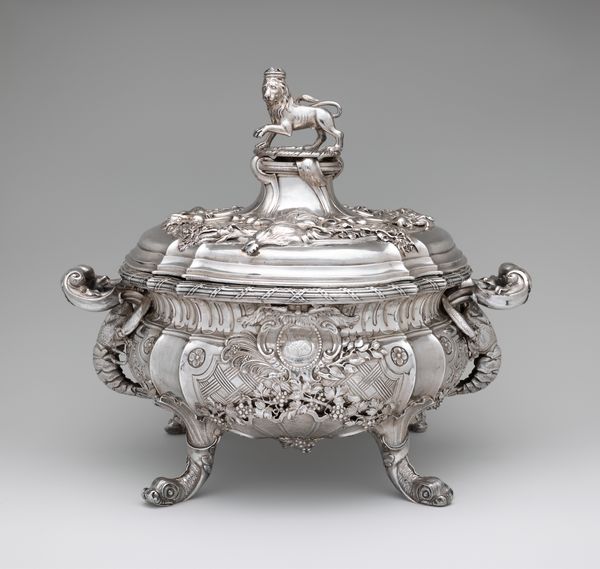
Dimensions: 2 1/2 × 2 3/8 in. (6.4 × 6 cm)
Copyright: Public Domain
Editor: So, here we have a miniature tureen with cover, made between 1785 and 1795, crafted from silver. It has such an air of delicacy, doesn’t it? What's your take on a piece like this? Curator: For me, this miniature tureen speaks volumes about the social dynamics of the late 18th century. Its very existence points to a culture of extravagant display among the elite, a culture often built on the backs of the disenfranchised. How does the material—silver—and the Rococo style reinforce those societal structures, do you think? Editor: That's interesting! I hadn’t considered the societal aspect. I was just thinking how pretty and detailed it is. Is there a direct connection with political themes then? Curator: Absolutely. These ornate objects weren’t created in a vacuum. Rococo, with its emphasis on asymmetry and decoration, reflects a world trying to maintain its elegance even as revolution simmered. Consider Marie Antoinette, her famous phrase was 'Let them eat cake' upon discovering the Third Estate's suffering due to famine. Where does an artwork such as this fit within such cultural tension? Editor: I see what you mean. The excess of it is a statement in itself, a visual representation of the vast inequalities of the time. I now see how art from this era reflected and perhaps even exacerbated social tensions. Curator: Precisely. Looking at decorative arts this way allows us to understand them not just as pretty objects, but as complex historical documents. Editor: It definitely shifts my perspective! I appreciate learning to see art as deeply connected to the political and social currents of the time.
Comments
No comments
Be the first to comment and join the conversation on the ultimate creative platform.
